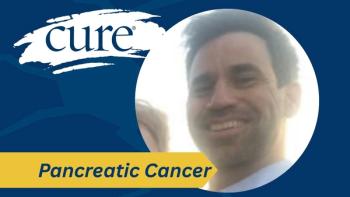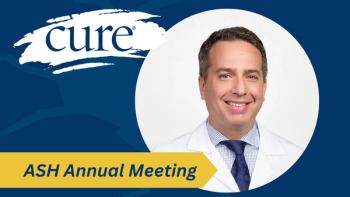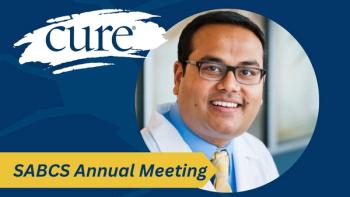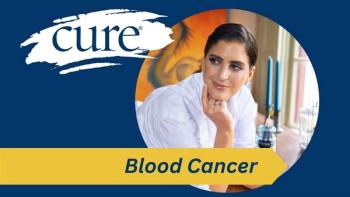
Blogging is a Great Way to Chronicle a Breast Cancer Journey
Key Takeaways
- Blogging provides a therapeutic outlet for cancer patients to process emotions and share experiences with a wider audience.
- The author emphasizes the importance of balancing personal disclosure with privacy when sharing cancer experiences online.
After my breast cancer diagnosis, blogging became a way to process emotions, share updates with loved ones, and connect with others facing similar journeys
Introduction: When I was diagnosed with breast cancer, I was inundated with calls and messages from concerned family and friends. Not only was I overwhelmed with the news I had cancer, but I also felt pressed to keep everyone up to date. Blogging helped me disseminate news quickly and “download” it from my brain.
How does a person’s life go from being completely normal to being turned upside down in an instant? I’ve often pondered that question but that’s what happened to me in June 2014, when I went to see a doctor about a lump in my breast. That day profoundly impacted my life, and I knew I’d never be the same.
The day I left the doctor’s office; I made a decision to share my story publicly. Not only did I want to help myself, but I also wanted to help others. One of the best ways I could do that was to share my experiences openly and honestly so when I discovered blogging, I knew it would be a very effective tool.
I’d never heard of blogging until I began to do research the afternoon the doctor told me the lump was more than likely cancerous. She ordered a biopsy and sent me home for a couple of days. In between freaking out and trying to fathom what was coming, I scoured the internet. As I searched for information on breast cancer, I came across several firsthand accounts shared on platforms such as Blogger, WordPress, and Wix. Blogging was new to me. It was a type of online diary. I wondered how women could share such personal information in this way, but as I read, I got a clear picture. The women were dumbfounded and trying to make sense of a situation over which they had no control.
As I read, I discovered some blogs gave extensive detail about the person’s experience with cancer while others were more guarded. I wanted to write a blog but wanted to temper my posts. I wanted to give good information but not share too much. I wanted my posts to be informative and personal but didn’t want them to frighten people with unnecessary details.
I decided to write from the heart. I did my best to write the posts as if I were writing to a dear friend. I knew family and friends would read the posts but was also aware complete strangers would read them. That’s the part that gave me pause. Was I willing to tell my story to people I didn’t know? I wasn’t sure.
Building a blog was easy with built in online templates. I didn’t want to spend a lot of time worrying about designing the site, so I picked a platform that was simple and easy to understand. When I got the site built, it was time to write my first post. It was scary, exciting, and challenging all at the same time.
I’ve always kept a diary, but never an online one. Typing words was a lot faster than writing them in a paper journal, but I had to remind myself to carefully consider the words I was sharing. No longer would I be the only one to read them, many others would, too. The first post was about discovering the lump. As I relived that day, I was surprised by the emotions that surfaced. I found, as I blogged, I felt lighter after dumping out information I’d bottled up inside. Within a day or two, I’d gotten the hang of it and knew it would be cathartic.
Sharing personal information on a public platform can be very dangerous, too. I didn’t know my posts would allow readers to comment unless I turned off that option. The day I received a comment on my first post; I was surprised and hurt. The reader had berated me for sharing such detailed information about the discovery of the lump in my breast. Immediately, I went into the settings and turned on comment moderation. That option gave me the ability to see any comments before they were posted to the blog. If I didn’t like them, I could delete them.
The blog allowed me to quickly share information on tests and other procedures with my family. I thought they’d appreciate being kept up to date via my posts and photos. Most of them enjoyed reading the daily posts and would leave words of encouragement, but one family member told me I was giving TMI (too much information.) I took the “advice” with a grain of salt and kept going. I knew I was doing this for myself, and no one was being forced to read what I wrote.
Thankfully, many readers subscribed to the blog and would let me know how much they appreciated my candor. Several readers contacted me asking for permission to email and I’ve been able to communicate with them about their cancer experiences.
Breast cancer is a scary thing. Blogging can be a helpful tool to record feelings, experiences, and more. Some may choose to include photos while others do not. Some find using video blogging, VLOGS, a more convenient way of sharing news.
Not everyone will find blogging a venue they enjoy, but many will find it helpful. The decision to blog is very personal, as is every decision relating to a cancer diagnosis and life thereafter. If you’re considering starting a blog, it may be helpful to visit other breast cancer blogs to get information on the types of things people share and how to share them.
Don’t feel pressured to share details of your cancer experience through an online blog or any other platform. Your experience is yours alone and only you can decide whether to allow others to be privy to details of your journey. Cancer doesn’t have to be public. It can remain private unless you choose to share it.
I have to say, after 11+ years of blogging, I’ve found it to be a very helpful way to process the disease of cancer. I don’t blog as much today as I did during the first years of my journey, but I do try to post several times a month and will more than likely continue this as long as I’m able.
This piece reflects the author’s personal experience and perspective as a breast cancer survivor. For medical advice, please consult your health care provider.
For more news on cancer updates, research and education,





